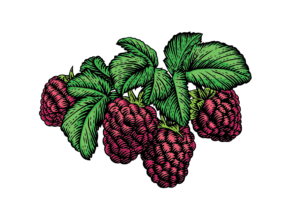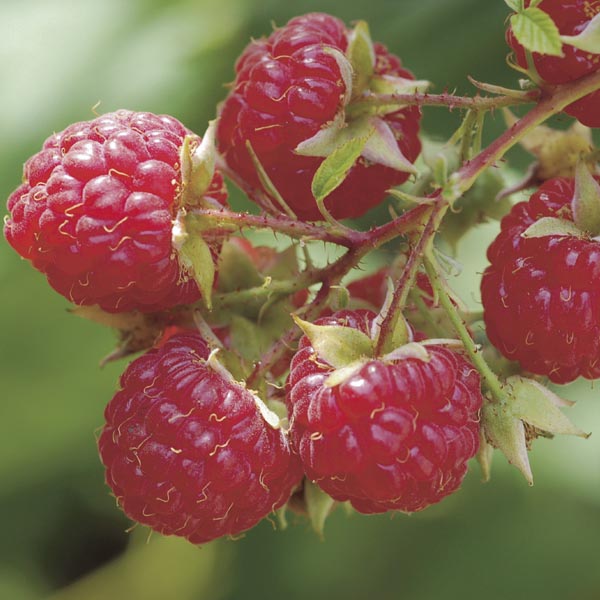- You cannot add ""Ground Cover Raspberry"" to the cart because the product is out of stock.
“Boyne” Raspberry
$15.00
Boyne was developed in Canada as an extremely hardy raspberry. These tenacious plants do very well in Alaska, and can handle less-than-ideal conditions. “Boyne” produces heavy harvests of medium-sized berries that are firm and excellent for freezing and for jam. They mature early and will be the first raspberries you harvest.
Description
Boyne was developed in Canada as an extremely hardy raspberry. These tenacious plants do very well in Alaska, and can handle less-than-ideal conditions. “Boyne” produces heavy harvests of medium-sized berries that are firm and excellent for freezing and for jam. They mature early and will be the first raspberries you harvest.
Raspberries do extremely well here in Alaska, and are the harbinger of autumn. Starting to ripen in late July, raspberries can be harvested over multiple weeks. Prolific with large berries, our raspberry varieties are proven for our Alaskan climate.
Planting:
Raspberries prefer full sun and slightly acidic soil. Till a 2ft wide row in which to plant your raspberries. Plant raspberries 3-4 feet apart, in rows at least 4 (preferably 6) feet apart. Raspberries produce runners from their root system. Remove raspberry plants that grow outside your rows, but keep the runners that appear within the rows. Dig at least a 1 square foot hole and add compost and soil. Plant the canes so that the crown of the plant is at least 1” above the surface.
Pruning, trellising, and care:
Raspberries grow canes every year. Fruit are produced on second year canes. In the fall or winter, prune the canes that just produced fruit. They are dead and will not return. Be careful not to prune current year’s canes, as they are the ones that will produce fruit next year. If the crown produces too many canes, you may prune current year’s grow to 4-6 canes per root crown.
Raspberries produce lots of fruit and the canes can be weighed down, broken, or the fruit can easily rot if touching the ground. Because of this, raspberries should be supported or trellised. It can be as easy and loosely gathering canes together with twine, or a more permanent trellis system can be installed.
Raspberries need an 1”-1.5” of water a week to maximize the harvest.
Harvest:
Harvest continually starting in late July when raspberries turn red. Harvest every couple of days until all berries have matured.
Pests:
Raspberries have few pests (other than the occasional moose). However, raspberries that are planted too close won’t be well pollinated, and berries will be crumbly and small. Additionally, if closely planted raspberries get too wet, mildew can ruin the berry crop.
Additional information
| Plant type | Bare root, Potted |
|---|

